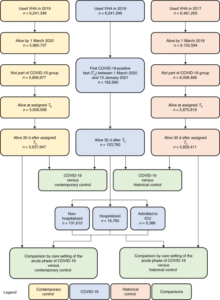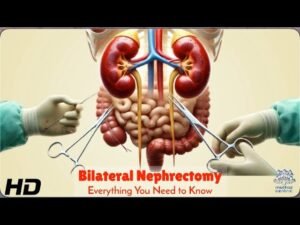Otitis Media With Effusion in Children and Adults
Otitis Media with Effusion: Understanding the Condition in Children and Adults
Otitis media with effusion (OME), often referred to as “glue ear,” involves a buildup of fluid behind the eardrum. Unlike an ear infection, OME typically does not cause pain but can lead to hearing loss. This condition can affect both children and adults, although it is more common in children. Acute OME usually resolves on its own within a few weeks, while chronic cases may last for several months. In this article, we will explore the causes, symptoms, diagnosis, and treatment options for OME.
What is Otitis Media with Effusion?
Otitis media with effusion occurs when fluid accumulates behind the eardrum due to a blockage in the Eustachian tube. This tube connects the middle ear to the back of the throat, allowing fluid to drain. When the Eustachian tube becomes blocked or dysfunctional, fluid cannot drain, leading to a buildup in the middle ear. OME is particularly common in children because their Eustachian tubes are more horizontal, which makes fluid drainage more difficult.
Why Are Children More Prone to OME?
In children, the Eustachian tubes are shorter and more horizontal, which increases the likelihood of fluid retention in the middle ear. As children grow, the tubes become longer and more angled, reducing the chance of developing OME. While OME is more common in children, adults can also develop the condition. Various factors such as colds, allergies, sinus infections, large tonsils, or a deviated septum can increase the risk of OME in adults.
Common Causes of Otitis Media with Effusion in Adults
Several factors contribute to the development of OME in adults, including:
-
Upper respiratory infections: Cold, allergies, or sinus infections can lead to swelling in the Eustachian tubes, preventing fluid drainage.
-
Anatomical issues: Enlarged tonsils or adenoids, or a deviated septum, can block the Eustachian tubes.
-
Medical treatments: Radiation therapy to the head or neck, as well as certain surgeries, can affect the function of the Eustachian tubes.
-
Environmental changes: Sudden changes in air pressure, such as during air travel or diving, can contribute to OME.
-
Tumors: Growths in the head or neck area can interfere with fluid drainage from the ear.
Symptoms of Otitis Media with Effusion
Although OME is typically not painful, it can cause discomfort and lead to hearing problems. Common symptoms of OME include:
-
A feeling of fullness or pressure in the ear
-
Popping or crackling sounds in the ear
-
Mild pain or discomfort in the ear
-
Slight balance issues or dizziness
If you or your child experience any changes in hearing, it is essential to consult a healthcare provider to prevent further complications, such as speech delays or social development issues in children.
How is Otitis Media with Effusion Diagnosed?
The first step in diagnosing OME is a visit to your primary care provider. They will use an otoscope to inspect the ear for signs of fluid behind the eardrum. In some cases, the eardrum may appear dull or have bubbles, and the doctor may be able to detect fluid accumulation. To confirm the diagnosis, a tympanometry test may be performed. This painless test uses sound waves to assess the fluid level in the middle ear. Your doctor may also recommend a hearing test to check for any hearing loss.
Treatment Options for Otitis Media with Effusion
In most cases, OME resolves on its own within a few weeks, and treatment is not required. However, chronic OME may require medical intervention. Treatment options include:
-
Over-the-counter (OTC) medications: Antihistamines and decongestants can help manage underlying conditions such as allergies or sinus infections that may be contributing to OME.
-
Hearing aids: If hearing loss is a significant issue, hearing aids may be recommended to improve auditory function.
-
Ear tubes: In some cases, small tubes may be inserted into the ear to allow for better airflow and drainage from the middle ear.
-
Surgery: If enlarged tonsils or adenoids are causing the blockage, surgery may be necessary to remove them and improve drainage.
It is important not to insert objects into the ear in an attempt to clear the fluid. Always seek professional medical guidance for safe and effective treatment.
When Does Otitis Media with Effusion Resolve?
Most cases of OME improve within 4 to 6 weeks without medical intervention. If the condition persists longer than this, it is considered chronic and may require further evaluation and treatment. Chronic OME may be related to underlying conditions, such as sinus infections or tumors, which should be addressed to prevent the recurrence of fluid buildup.
Conclusion
Otitis media with effusion is a condition where fluid accumulates behind the eardrum, often leading to hearing loss. While it is typically not painful, the buildup of fluid can cause significant discomfort and impact a person’s ability to hear clearly. Although OME is more common in children, adults can also be affected, especially if they have underlying health conditions. Most cases resolve on their own, but treatment may be necessary in chronic cases to prevent complications. It is essential to seek medical attention if you or your child experience any changes in hearing or other symptoms associated with OME.
Frequently Asked Questions
-
Why do adults get otitis media with effusion?
-
What are the symptoms of otitis media with effusion?
-
How long does it take for otitis media with effusion to get better?
Expert Tips
-
Be mindful of seasonal changes, as they may affect your susceptibility to respiratory infections and allergies.
-
If you or your child frequently experience ear problems, consider seeing a specialist for a thorough evaluation.
Key Takeaways
-
Otitis media with effusion is common and often resolves without treatment.
-
The condition can affect both children and adults, with different causes and risk factors.
-
Seeking medical advice is crucial if you experience significant hearing loss or discomfort.
Join Our Community
For more health tips and updates, subscribe to our newsletter.















